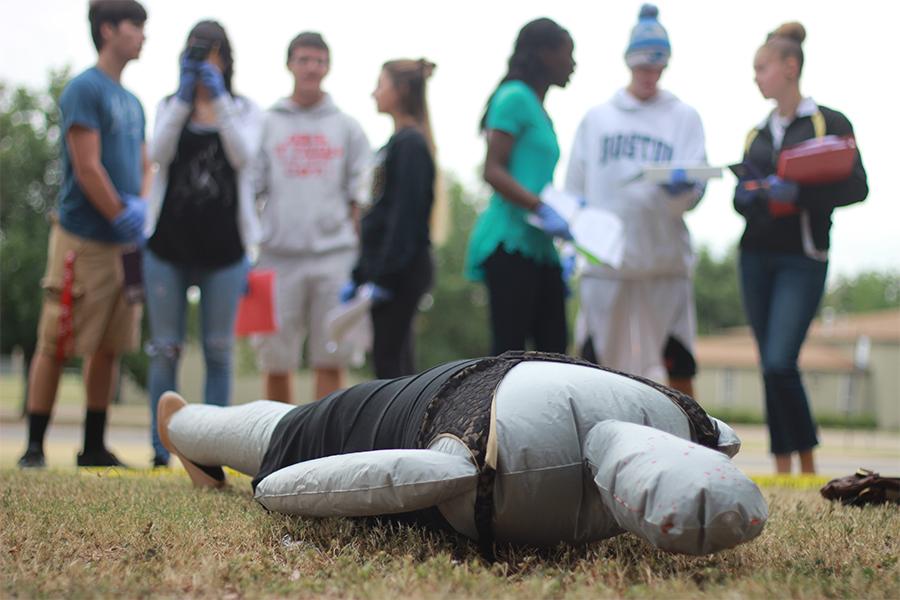‘Murder, She Wrote’
Forensic Science simulates crime scenes for labs to generate investigative realism
November 2, 2015
Several objects lay strewn across the floor: a bag, a water bottle, a pencil, an arm. A group of students crowded the area and carefully examined the items.
They saw more than just a careless mishap. They saw a pencil that lay too far from the arm, a water bottle that was somehow still in the bag, and a bag, still wrapped around the arm. This is a scenario similar to what the forensic science students examine for their assignments.
The forensic science class creates its learning environment through the use of close depictions of actual and theoretical crime scenes.
“It’s a class about solving mysteries,” forensic science teacher Autumn Weber said. “The kids have to think on their own. They have to come up with their own theory.”
Forensic science students use the scenarios to get a hands-on experience with crime scenes. They discover where the evidence should go, what the evidence means, whether there was a motive, and, finally, what happened.
The investigations may lead the students to discover that there was some sort of relationship between the offender and victim, to learn about the offender’s personality, or both. All the information they need is displayed before them.
“All the scenes are different,” junior Alex MacCaw said. “If it was an actual crime, I think we’d feel differently.”
The scenarios are set up in either Weber’s classroom, the courtyard, the parking lot, a stairwell or out on the school grounds.
The items used vary, creating an element of contrast about them, and when the props are the same, the motives are different. As Weber has a conference period for her first class, she sets up all of these scenarios during that time and before school. They are modeled after real scenes but do not have the element of an actual crime having been committed.
“It’s one thing for me to tell them and another for them to measure it themselves,” Weber said. “They learn the exact procedures. This is exactly how real life works.”
The students are not given a packet of papers with all the information. They are given the scenario and their knowledge of physics, chemistry and biology in order to discern the information about the scene themselves. They may need to calculate bullet trajectories, identify chemicals or examine genetics based upon the scenario.
“You need to know the cause of death,” senior Zach Payne said. “If they were stabbed or shot and the possible time frames.”
